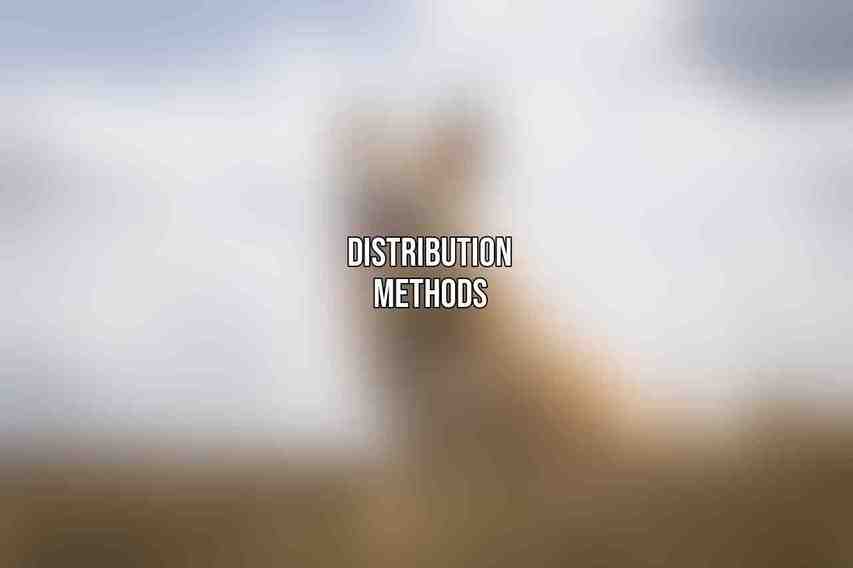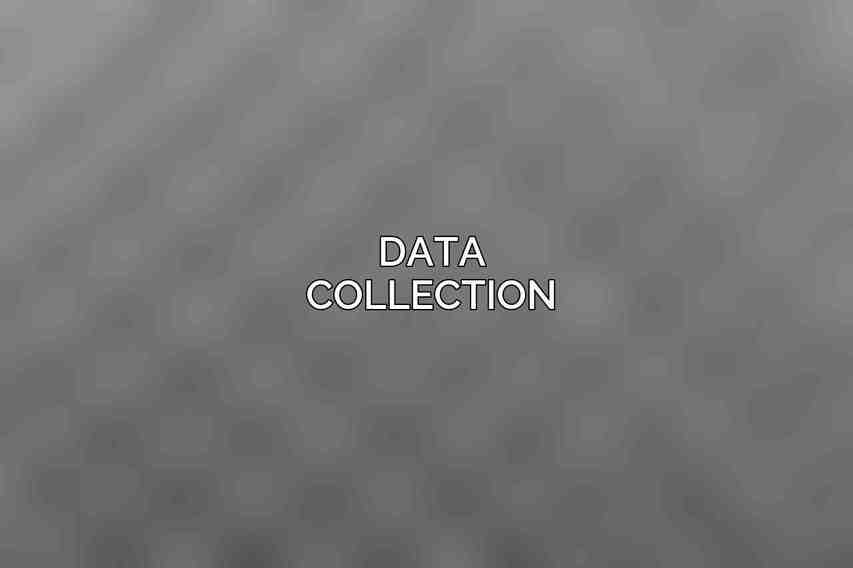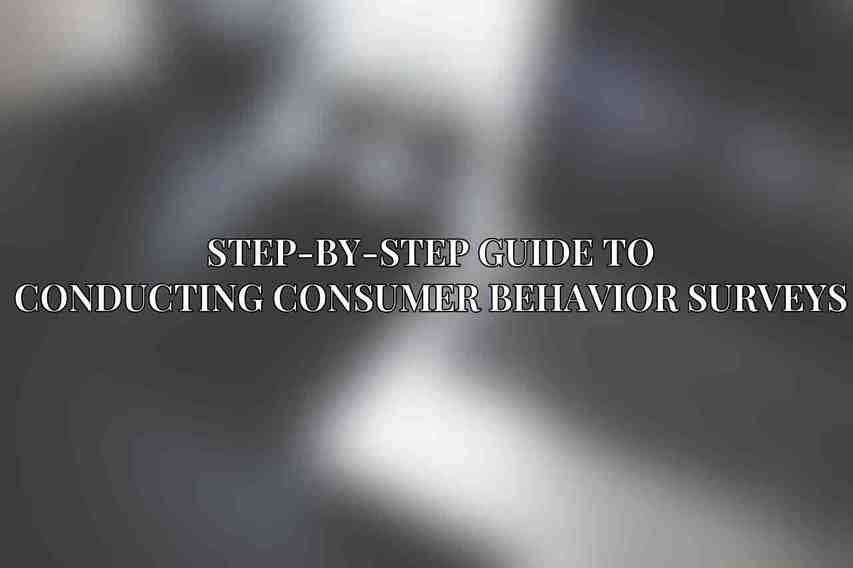Consumer behavior surveys are essential tools used by businesses and researchers to gather insights into the preferences, motivations, and buying behavior of consumers. By collecting and analyzing data through surveys, companies can better understand their target audience and make informed decisions to meet consumer needs effectively. Understanding consumer behavior is crucial for businesses to develop successful marketing strategies, product enhancements, and overall customer satisfaction.
Consumer behavior surveys have a wide range of applications across various industries. From product development and pricing strategies to advertising and branding efforts, the insights gained from these surveys can help businesses tailor their offerings to meet consumer demands accurately. By studying consumer behavior, companies can stay ahead of market trends, identify potential opportunities, and address any challenges effectively.
Research Design
Before embarking on conducting a consumer behavior survey, it is crucial to establish a robust research design. This includes outlining the objectives of the survey, formulating research questions and hypotheses, and determining the target population and appropriate sampling methods. The research design lays the foundation for the survey and ensures that the data collected will be relevant and reliable.
When designing a consumer behavior survey, consider the specific objectives you aim to achieve. Whether it is understanding consumer preferences, evaluating brand perception, or analyzing buying patterns, clearly defined objectives will guide the entire survey process. Formulate research questions that align with these objectives and develop hypotheses to test specific relationships or assumptions within the data. Additionally, carefully consider the target population and select appropriate sampling methods to ensure the results are representative of the desired audience.
Questionnaire Design
The effectiveness of a consumer behavior survey heavily depends on the design of the questionnaire. When creating a questionnaire, various factors need to be considered, such as the types of questions to include, the wording and order of questions, and the overall structure of the survey.
- Open-ended vs. Closed-ended Questions: Decide whether open-ended or closed-ended questions are more suitable for the survey objectives. Open-ended questions provide qualitative insights, while closed-ended questions offer quantitative data for analysis.
- Demographic, Behavioral, and Psychographic Questions: Include a mix of demographic questions (age, gender, income), behavioral questions (purchase frequency, brand loyalty), and psychographic questions (lifestyle choices, values) to obtain a holistic understanding of consumers.
- Question Wording and Ordering: Ensure that questions are clear, concise, and unbiased to elicit accurate responses. The order of questions should flow logically to maintain respondent interest and engagement.
- Pretesting the Questionnaire: Before launching the survey, conduct pretests with a small group to identify any issues in question wording, survey length, or response options.
Distribution Methods

Once the questionnaire is finalized, selecting the appropriate distribution method is crucial to reaching the target audience effectively. Various distribution methods can be utilized, each with its advantages and considerations.
- Online Surveys: Online surveys are cost-effective and allow for easy data collection from a large number of respondents. Depending on the research objectives, both qualitative (focus groups, interviews) and quantitative (structured surveys) online methods can be employed.
- Mail Surveys: While traditional, mail surveys can still be effective for reaching certain demographics, especially those less inclined to participate in online surveys.
- Telephone Surveys: Conducting surveys via telephone allows for personal interaction with respondents and can be useful for gathering in-depth responses.
- Personal Interviews: Face-to-face interviews provide an opportunity for detailed responses and observation of non-verbal cues, making them valuable for in-depth consumer behavior studies.
- Sampling Techniques: Utilize various sampling techniques such as random sampling, stratified sampling, or quota sampling to ensure that the survey results are representative of the target population.
Data Collection

During the data collection phase, it is important to monitor response rates, ensure accuracy in data entry, and maintain data integrity through proper cleaning and validation processes. Response rates indicate the level of engagement with the survey and can impact the reliability of the results.
Once responses are collected, entering the data into a secure database for analysis is essential. Data cleaning involves identifying and correcting any errors or inconsistencies in the dataset to ensure the accuracy of the analysis. Data validation procedures further verify the quality and reliability of the collected data before moving on to the analysis stage.
Data Analysis
After data collection, the next step is to analyze the survey data to derive meaningful insights into consumer behavior. Various data analysis techniques can be employed to interpret the data effectively.
- Descriptive Statistics: Descriptive statistics help summarize and present the survey data in a clear and understandable format, providing an overview of key trends and patterns.
- Inferential Statistics: Inferential statistics allow researchers to make inferences and predictions about the larger population based on the survey sample data.
- Exploratory Data Analysis: Exploratory data analysis involves examining the data to discover underlying patterns, relationships, and trends that may inform further analysis.
- Segmentation Analysis: Segmenting the survey data based on demographic or behavioral characteristics can reveal distinct consumer segments with unique preferences and behaviors.
- Data Visualization: Visualizing the survey data through charts, graphs, and other visual aids enhances understanding and facilitates the communication of findings to stakeholders.
Reporting and Interpretation
Following data analysis, the key insights gleaned from the survey should be clearly identified, interpreted, and communicated effectively. Reporting on the survey findings in a concise and actionable manner is crucial for decision-making within the organization.
Effective reporting involves summarizing the key findings, highlighting significant trends or patterns, and providing relevant recommendations based on the data. Visual aids such as charts, graphs, and tables can help convey the information clearly to stakeholders and facilitate discussions on how to apply the insights to business strategies.
Advanced Techniques
In addition to traditional survey methods, businesses can explore advanced techniques to delve deeper into consumer behavior and preferences.
- Neuromarketing: Neuromarketing uses neuroscience principles to study consumer responses to marketing stimuli, providing insights into subconscious decision-making processes.
- Ethnographic Research: Ethnographic research involves observing and understanding consumer behavior in their natural environments, offering valuable qualitative insights into consumer actions and motivations.
- Social Media Monitoring: Monitoring social media conversations and interactions can provide real-time insights into consumer sentiments, preferences, and trends.
- Big Data Analytics: Leveraging big data analytics allows businesses to analyze large volumes of data to uncover patterns, trends, and correlations that can inform strategic decision-making.
Ethical Considerations
When conducting consumer behavior surveys, it is essential to prioritize ethical considerations to protect the rights and privacy of survey participants.
- Informed Consent: Obtain informed consent from survey respondents, outlining the purpose of the study, how the data will be used, and ensuring voluntary participation.
- Confidentiality: Safeguard the confidentiality of survey responses and ensure that individual participant data is kept secure and anonymous.
- Data Security: Implement measures to protect survey data from unauthorized access, breaches, or misuse, ensuring compliance with data protection regulations.
Best Practices
To ensure the success of a consumer behavior survey, consider the following best practices throughout the survey process: Get the scoop on our perspective regarding Top Tools for Effective Consumer Behavior Analysis in 2024
- Set Clear Goals and Objectives: Define clear research objectives and goals to guide the survey design and analysis.
- Use a Reliable Sampling Method: Select a sampling method that accurately represents the target population to ensure the validity of the survey results.
- Design a Comprehensive Questionnaire: Develop a well-structured questionnaire that includes a mix of demographic, behavioral, and psychographic questions to obtain a comprehensive understanding of consumer behavior.
- Distribute Surveys Through Multiple Channels: Utilize multiple distribution channels to reach a diverse audience and increase response rates.
- Analyze Data Appropriately: Employ appropriate data analysis techniques to derive valuable insights from the survey data.
- Implement Ethical Practices: Adhere to ethical standards throughout the survey process to protect participant rights and ensure data integrity.
Conducting consumer behavior surveys is a multifaceted process that requires careful planning, thoughtful execution, and ethical considerations. By following this step-by-step guide and incorporating best practices, businesses can harness the power of consumer insights to make informed decisions and drive success in this competitive market world.
Frequently Asked Questions
What are consumer behavior surveys?
Consumer behavior surveys are research tools used to gather insights into customers’ preferences, attitudes, and behaviors when making purchasing decisions.
Why are consumer behavior surveys important?
Consumer behavior surveys help businesses understand their target audience better, improve products/services, and create more effective marketing strategies.
How should I design a consumer behavior survey?
When designing a consumer behavior survey, it is important to clearly define objectives, choose the right survey format, use a mix of open-ended and close-ended questions, and pilot test the survey before deployment.
How do I choose a sample for my consumer behavior survey?
To choose a sample for your consumer behavior survey, consider factors like demographics, location, and behavior patterns of your target audience. It is important to ensure that the sample is representative of your target market.
How can I analyze the results of a consumer behavior survey?
To analyze the results of a consumer behavior survey, you can use statistical tools, such as cross-tabulation, regression analysis, or factor analysis. It is important to interpret the data accurately to draw meaningful conclusions.

